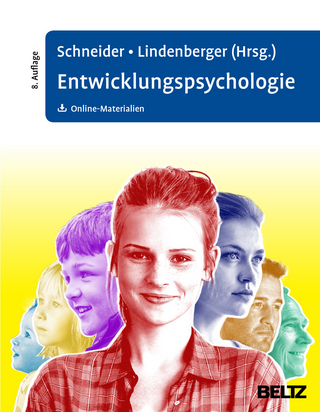
Children's Language: Revised Edition
Consensus and Controversy
Seiten
2007
|
2nd edition
Continuum International Publishing Group Ltd. (Verlag)
978-0-8264-8880-0 (ISBN)
Continuum International Publishing Group Ltd. (Verlag)
978-0-8264-8880-0 (ISBN)
The popular notion of how children come to speak their first language is that their parents teach them words, then phrases, then sentences, then longer utterances. But there is widespread agreement amongst linguists that this account is wrong. This book aims to give readers the background necessary to form their own views on the debate.
The popular notion of how children come to speak their first language is that their parents teach them words, then phrases, then sentences, then longer utterances. Although there is widespread agreement amongst linguists that this account is wrong, there is much less agreement as to how children really learn language. This revised edition of Ray Cattell's bestselling textbook aims to give readers the background necessary to form their own views on the debate, and includes accessible summaries of key thinkers, including Chomsky, Halliday, Karmiloff-Smith and Piaget.
The popular notion of how children come to speak their first language is that their parents teach them words, then phrases, then sentences, then longer utterances. Although there is widespread agreement amongst linguists that this account is wrong, there is much less agreement as to how children really learn language. This revised edition of Ray Cattell's bestselling textbook aims to give readers the background necessary to form their own views on the debate, and includes accessible summaries of key thinkers, including Chomsky, Halliday, Karmiloff-Smith and Piaget.
Ray Cattell is Emeritus Professor of Linguistics at the University of Newcastle, New South Wales, Australia.
1. Getting to rub two words together; 2. Catching fire; 3. Do we teach children to speak: Skinner and behaviourism; 4. Learning through touching and feeling: Jean Piaget; 5. What goes on in the mind?: Mentalism and Chomsky; 6. A close look at Chomsky's theories; 7. Do we help children to speak; 8. Learning how to mean: Halliday; 9. The two hemispheres of the brain - A; 10. The two hemispheres of the brain - B; 11. The bounds of language acquisition; 12. Animals and language; 13. Bootstrapping - A; 14. Bootstrapping - B; 15. The best of both worlds? Annette Karmiloff-Smith; 16. Conclusion Glossary.
| Erscheint lt. Verlag | 10.5.2007 |
|---|---|
| Verlagsort | London |
| Sprache | englisch |
| Maße | 156 x 234 mm |
| Gewicht | 458 g |
| Themenwelt | Geisteswissenschaften ► Psychologie ► Entwicklungspsychologie |
| Geisteswissenschaften ► Sprach- / Literaturwissenschaft ► Sprachwissenschaft | |
| ISBN-10 | 0-8264-8880-3 / 0826488803 |
| ISBN-13 | 978-0-8264-8880-0 / 9780826488800 |
| Zustand | Neuware |
| Haben Sie eine Frage zum Produkt? |
Mehr entdecken
aus dem Bereich
aus dem Bereich
Vormals Oerter & Montada
Buch | Hardcover (2018)
Julius Beltz GmbH & Co. KG (Verlag)
64,00 €
Grundlagen, Diagnostik und Therapie vom Säuglingsalter bis zum alten …
Buch | Hardcover (2022)
Klett-Cotta (Verlag)
45,00 €
praktische Hilfen für Kinder und Jugendliche im Autismus-Spektrum
Buch | Softcover (2023)
Kohlhammer (Verlag)
31,00 €


